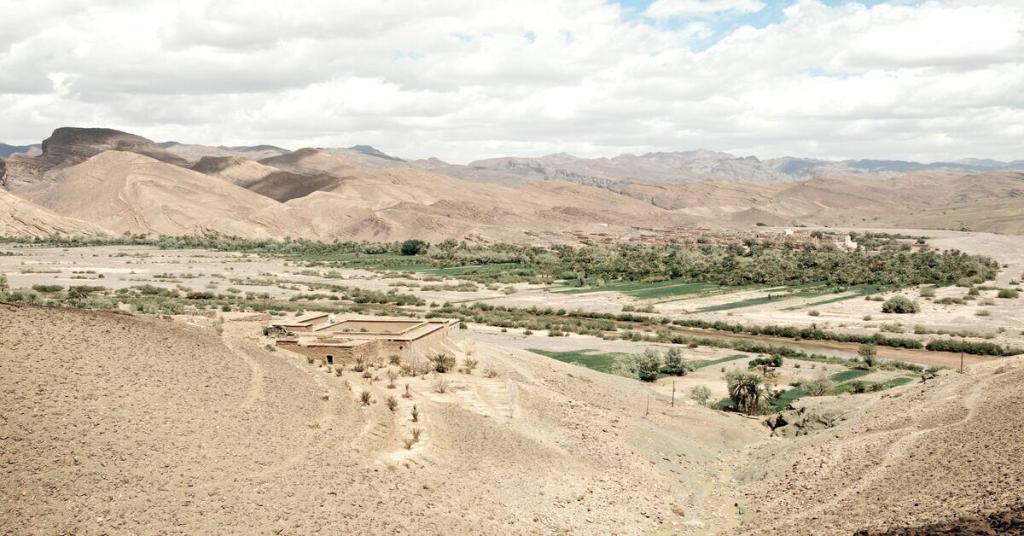
Erfoud and the khattearas of Achouria
After Erg Chebbi, which for us will be the most easterly point of our two weeks in Morocco, we change course for the north-west and the gorges of the High Atlas.
Views of Erfoud
This town is on our route, and we try to gain an overview by climbing the Borj road. The place is lost, but within five minutes we’re surrounded by fossil sellers.
Erfoud is a new town created from scratch by the French. There was, however, already a caravan station shuttling people to and from the Sahara and Black Africa. The official transcription gives it the name Arfoud. In October, Erfoud became the capital of the date. For three days, the Guetna brings the town to life. It’s the date festival, to bring the harvest to a close. But we’re too late. (Source: Wikipedia)
The Erfoud palm grove is one of the largest in Morocco.
The Erfoud cemetery
We first see it from the vantage point. However, we stop at the bottom and enter the enclosure. Near the entrance on the left are the most elaborate tombs, but these are generally stone decorations; very few tombs are made of concrete, and only one is tiled.
The simplest tombs are covered only with stones found on site, or simply with earth. All, however, have two stones set into the ground. The one at the feet is in the axis of the tomb, the other is at the head and perpendicular. The graves are oriented perpendicularly to the direction of Mecca, so that the deceased, lying on his right side, looks towards Mecca. Many tombs have a bowl or other receptacle near the head of the grave. According to Islam, the location of the dead must be marked for all eternity.
According to Islam, it is not permitted to show off one’s wealth; a tomb must be simple. This tomb is in dispute with this custom.
In autumn, the Ziz is normally dry at the surface, but water continues to circulate at the bottom of the riverbed. In some places, often when crossing rocky bars at the bottom, water accumulates and rises to the surface, as here.
Like everywhere else, as soon as there’s a little water somewhere, you see someone washing their clothes. Yet the town of Erfoud is well equipped with running water.
Achouria north-west of Erfoud
On the road between Erfoud and Tinejad are foggaras some 30 km north-west of Erfoud. The first thing we see is the ruin of a mosque. Only the walls remain, the roofs have collapsed.
Alignments of qanat inspection shafts
These piles of earth mark the entrances to the irrigation system’s underground canals. These are canals that slope slightly but cut through the water table, which also slopes here. Where the two intersect, the water is diverted into the canal and collected a few hundred metres further on. You can see the craters, which are actually just the excavation. These holes provide access to the underground irrigation system for cleaning and pipe maintenance. In the past, slaves were assigned to this task.
extremely horizontal and precise, with a slope to allow the water to flow into the channel.
A qanat (Persian: قنات) is an underground irrigation system for harvesting seepage water. It is also called a foggara in the Gourara and Adrar regions and a khettara in Morocco. It differs from an aqueduct in that the water is already there. A qanat is built by boring a tunnel into a cliff or base of a mountainous area, following an aquifer formation. Its purpose is to bring water to the surface, or it can be used to irrigate farmland. Water is not brought to the surface, but rather outside: on the irrigated surface. Tunnels are
extremely horizontal and precise, with a slope to allow the water to flow into the channel.
The “craters” are mounds of earth about two metres high.
Leave a Reply